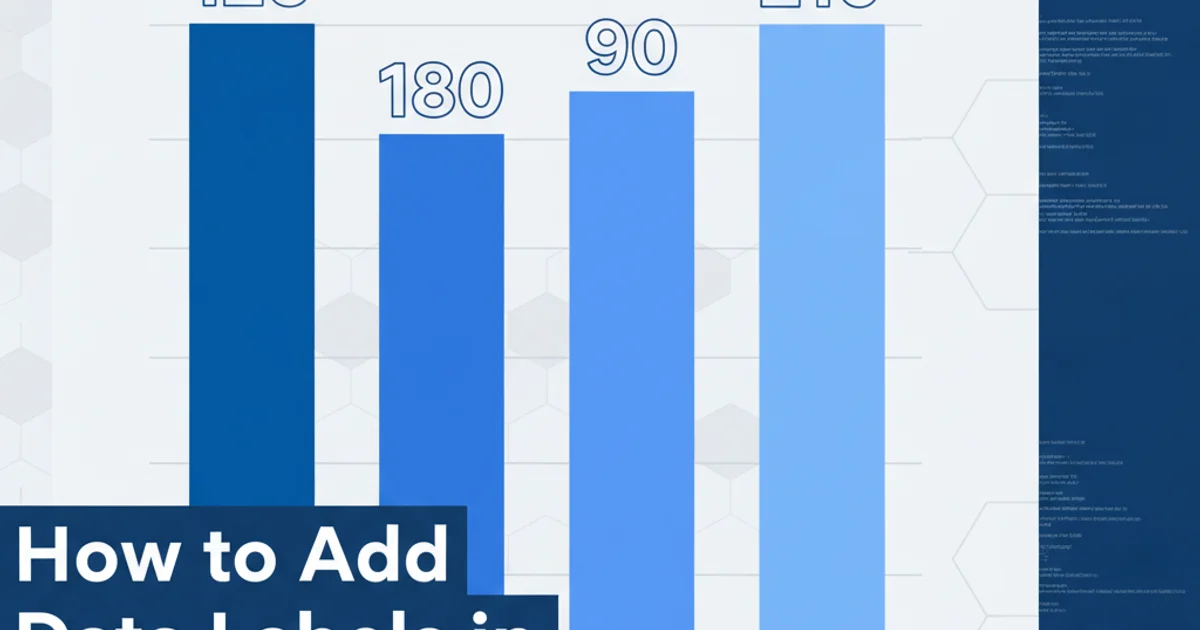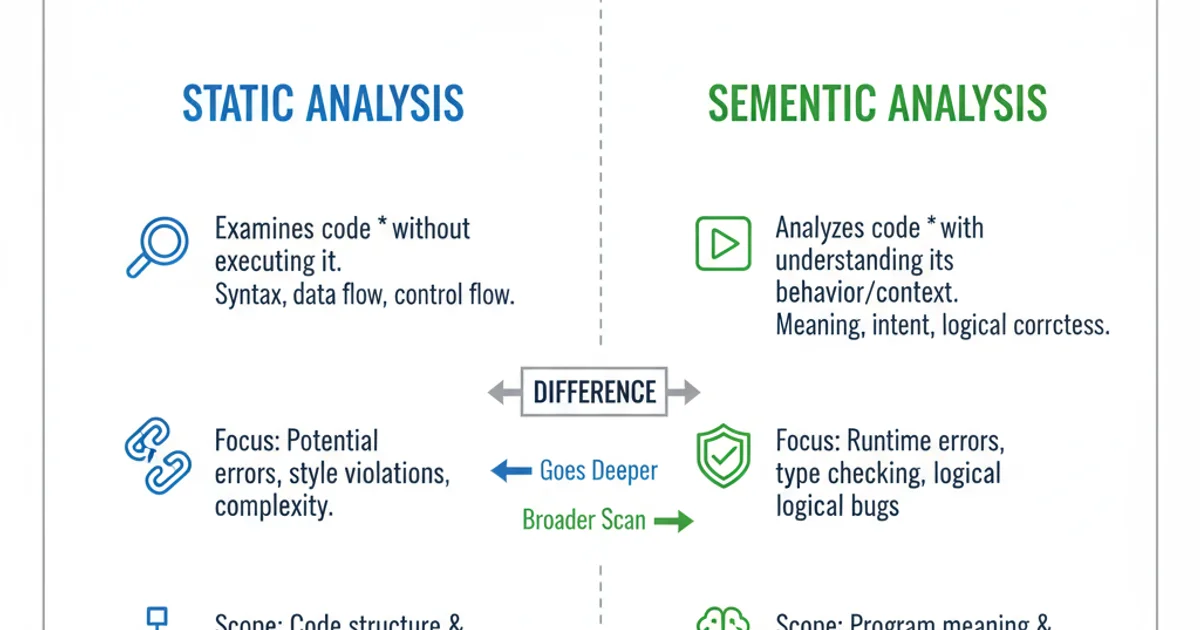What is the difference between static analysis and semantic analysis?
Categories:
Static Analysis vs. Semantic Analysis: Understanding the Core Differences

Explore the distinct roles of static analysis and semantic analysis in software development, their methodologies, and how they contribute to code quality and correctness.
In the realm of software development, ensuring code quality, correctness, and adherence to standards is paramount. Two critical techniques employed in this pursuit are static analysis and semantic analysis. While often discussed in similar contexts, they operate at different levels of abstraction and serve distinct purposes. Understanding their differences is key to leveraging them effectively in your development workflow, from compilers to linters and advanced code quality tools.
What is Static Analysis?
Static analysis refers to the examination of source code without actually executing the program. It's like reading a book to find grammatical errors or plot holes without ever performing the actions described. Static analysis tools scrutinize the code for patterns, potential bugs, coding standard violations, security vulnerabilities, and other issues that can be detected by analyzing the code's structure and syntax. This process typically occurs during compilation or as a separate step in the development pipeline.
flowchart TD
A[Source Code] --> B{Lexical Analysis}
B --> C{Syntactic Analysis (Parsing)}
C --> D[Abstract Syntax Tree (AST)]
D --> E[Static Analysis Tools]
E --> F{Identify Issues}
F --> G[Report/Feedback]Typical flow of static analysis in a compiler or linter
Common examples of issues identified by static analysis include:
- Syntax errors: Missing semicolons, unclosed brackets.
- Style violations: Non-adherence to naming conventions, incorrect indentation.
- Potential bugs: Unreachable code, unused variables, null pointer dereferences (in some cases).
- Security flaws: Hardcoded credentials, SQL injection vulnerabilities (pattern-based).
- Complexity metrics: Cyclomatic complexity, lines of code.
What is Semantic Analysis?
Semantic analysis, on the other hand, goes beyond the mere structure and syntax of the code. It delves into the meaning and logic of the program. While static analysis might tell you if a sentence is grammatically correct, semantic analysis tries to understand if the sentence makes sense in context. It checks for consistency of types, correct use of variables, function calls with appropriate arguments, and other logical constraints that cannot be verified by syntax alone. This phase typically occurs after syntactic analysis, often building upon the Abstract Syntax Tree (AST) generated during parsing.
flowchart TD
A[Abstract Syntax Tree (AST)] --> B{Symbol Table Construction}
B --> C{Type Checking}
C --> D{Scope Resolution}
D --> E{Control Flow Analysis}
E --> F{Data Flow Analysis}
F --> G[Annotated AST/Intermediate Representation]
G --> H[Compiler/Interpreter]Key stages and outputs of semantic analysis
Key aspects and checks performed during semantic analysis include:
- Type checking: Ensuring that operations are performed on compatible data types (e.g., you can't add a string to an integer without explicit conversion).
- Scope resolution: Verifying that variables and functions are declared and used within their defined scopes.
- Declaration checks: Ensuring that all variables and functions are declared before use.
- Argument matching: Confirming that function calls provide the correct number and types of arguments.
- Access control: Checking if private members are accessed appropriately.
- Control flow analysis: Detecting unreachable code or infinite loops (more advanced forms).
public class Example {
public static void main(String[] args) {
int x = 10;
String y = "hello";
// Semantic error: cannot add int and String directly
// int z = x + y;
System.out.println(x + " " + y);
// Semantic error: 'undeclaredVar' is not defined
// System.out.println(undeclaredVar);
}
}
Java code demonstrating common semantic errors that a compiler would catch.
Key Differences and Overlap
While distinct, static and semantic analysis are often intertwined within a compiler's front-end or a sophisticated code analysis tool. Static analysis is a broader term that can encompass semantic checks, but semantic analysis specifically refers to the deeper understanding of the program's meaning and logical consistency. Think of it this way: all semantic analysis is a form of static analysis, but not all static analysis involves deep semantic understanding.

A comparative overview of static analysis and semantic analysis
Here's a table summarizing their core distinctions:
| Feature | Static Analysis (General) | Semantic Analysis (Specific) |
|---|---|---|
| Focus | Code structure, syntax, patterns, potential issues | Meaning, logical consistency, type correctness, scope |
| Depth | Surface-level to moderate | Deep understanding of program logic and rules |
| Errors Caught | Syntax errors, style violations, simple bugs, security patterns | Type mismatches, undeclared variables, incorrect function calls, access violations |
| Tools | Linters (ESLint, Pylint), basic compilers, SAST tools | Compilers (type checkers), advanced static analyzers, IDEs |
| Execution | No execution required | No execution required |
| Output | Warnings, errors, style suggestions, metrics | Compiler errors (e.g., type errors), intermediate representation |
| Relationship | Broader category; can include semantic checks | A specific, deeper phase within static analysis |
Why Both Are Crucial
Both static and semantic analysis play indispensable roles in the software development lifecycle. Static analysis provides a quick and broad sweep for common pitfalls and adherence to coding standards, making code more readable and maintainable. Semantic analysis ensures the fundamental logical correctness of the program, preventing runtime errors that stem from type inconsistencies or incorrect usage of language constructs. Together, they form a powerful defense against bugs, improve code quality, and enhance developer productivity by catching errors early.